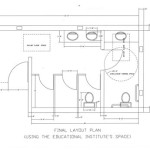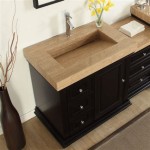Labor Cost of Installing a Bathroom Vanity: A Comprehensive Guide
Installing a new bathroom vanity can significantly enhance the aesthetic appeal and functionality of a bathroom. While the cost of the vanity itself is a major factor, the labor cost associated with its installation is often a substantial portion of the overall project expense. Understanding the factors that influence labor costs and obtaining accurate estimates are crucial for effective budgeting and project management.
This article provides a comprehensive overview of the labor costs involved in bathroom vanity installation, examining the various elements that contribute to these costs and offering guidance on how to manage them effectively. It explores pricing structures, common tasks involved, and considerations for different scenarios, empowering homeowners to make informed decisions regarding their bathroom renovation projects.
Key Factors Influencing Labor Costs
Several factors can significantly affect the labor cost of installing a bathroom vanity. These encompass the scope of the project, the complexity of the installation, geographic location, and the experience and qualifications of the installer. A thorough understanding of these variables is essential for comprehending the range of potential expenses.
1. Scope of the Project:
The scope of the project is a primary determinant of labor costs. A simple replacement of an existing vanity with a similarly sized and plumbed unit will typically be less expensive than a complete bathroom remodel involving significant plumbing alterations, electrical work, and structural modifications. The following aspects can widen the scope:
a. Removal of Old Vanity: The removal of the existing vanity can add to the labor cost, especially if it's difficult to access or requires disassembly. Some older vanities may be firmly attached to the wall requiring careful removal to avoid damaging surrounding tiles or drywall. The disposal of the old vanity also adds to the scope, and some installers may charge an additional fee for hauling away the garbage.
b. Plumbing Modifications: Any alterations to the existing plumbing, such as moving drainpipes, water supply lines, or installing new shut-off valves, will directly increase labor costs. Older plumbing can be corroded and require replacement adding to the scope of the plumber's work.
c. Electrical Work: If the installation involves electrical work, such as installing new outlets, wiring for vanity lights, or connecting a GFCI outlet, a licensed electrician must be hired. This will add to the overall cost, and building codes may dictate the placement and type of outlet required.
d. Drywall Repairs: Removing an old vanity often reveals damage to the drywall behind it, especially if there were leaks or moisture problems. Patching and repairing the drywall before installing the new vanity will add to the labor time and material cost.
e. Flooring Adjustments: The footprint of the new vanity may not perfectly match the old one, requiring adjustments to the flooring. This could involve filling in gaps where the old vanity was located or installing new flooring underneath the new vanity.
2. Complexity of the Installation:
The complexity of the vanity installation itself also plays a crucial role in determining the labor cost. Pre-assembled vanities are generally easier and quicker to install than those that require assembly. Wall-mounted vanities, for example, require precise measurements and secure mounting to wall studs, adding to the installation time and expertise needed.
a. Vanity Type: Different vanity types require varying levels of installation expertise. For example, installing a double vanity with two sinks requires more time and effort than installing a single vanity. Complexities arise from accommodating multiple plumbing connections and ensuring proper leveling.
b. Customization: Custom-built vanities or those requiring modifications to fit the existing space will invariably incur higher labor costs because they demand intricate work and adjustments on-site. A custom vanity might require trimming to fit or modification of plumbing to accommodate the style.
c. Leveling and Alignment: Achieving perfect leveling and alignment is critical for a functional and aesthetically pleasing vanity installation. Uneven floors or walls can present challenges and require shimming or other adjustments, increasing the time required.
d. Countertop Installation: Installing a countertop, especially if it's made of marble, granite, or other heavy materials, can be a complex task. Proper support and sealing are essential to prevent damage and ensure longevity.
3. Geographic Location:
Labor rates for skilled tradesmen, including plumbers, carpenters, and general contractors, can vary significantly depending on geographic location. Metropolitan areas with a higher cost of living generally have higher labor rates than rural areas. The demand for skilled labor in a particular region can also influence pricing.
a. Market Demand: In areas with high demand for remodeling services, contractors may charge higher rates due to increased competition and a limited supply of skilled labor. Conversely, in areas with lower demand, contractors may offer more competitive pricing to attract customers.
b. Licensing and Regulations: State and local licensing requirements for plumbers and electricians can also influence labor costs. Areas with strict licensing regulations may have a higher cost of labor because of more stringent qualifications and training required. Insurance needed for specific work will also be a factor.
c. Travel Time: Contractors may factor in travel time to and from the job site, especially if the location is far from their base of operations. This can be reflected in their hourly rate or as a separate travel fee.
4. Installer Experience and Qualifications:
The experience and qualifications of the installer are directly correlated with the quality of work and, consequently, the labor cost. Licensed and insured professionals with years of experience typically charge more than unlicensed handymen or novice installers. However, the higher cost often translates to greater expertise, reliability, and assurance of quality workmanship.
a. Licensing and Insurance: Hiring licensed plumbers and electricians is crucial for ensuring that the work complies with local building codes and regulations. Proper licensing also provides assurance that the professional has undergone the necessary training and has demonstrated competence in their field. Insurance protects the homeowner from liability in case of accidents or damage during the installation process.
b. Reputation and References: Checking online reviews and obtaining references from previous clients can provide valuable insights into the installer's reputation and the quality of their work. Positive reviews and satisfied customers are indicators of a reliable and skilled professional.
c. Warranty and Guarantees: Reputable installers typically offer warranties or guarantees on their workmanship, providing peace of mind to the homeowner. This ensures that any defects or issues arising from the installation will be promptly addressed and rectified.
Pricing Structures for Labor
Contractors typically employ one of several pricing structures when estimating the labor cost for installing a bathroom vanity. Understanding these structures is essential for comparing bids from different contractors and evaluating the fairness of the pricing.
1. Hourly Rate:
Some contractors charge an hourly rate for their labor. This pricing structure is common for smaller projects or when the scope of the work is difficult to define in advance. The hourly rate can vary depending on the experience and qualifications of the installer, the geographic location, and the complexity of the project. This can be anywhere from $50 to $150 an hour, and sometimes even more.
a. Transparency: Hourly rates offer transparency because the homeowner is paying for the actual time spent on the project. However, it's crucial to get an estimate of the total hours needed to avoid unexpected cost overruns. Make sure to get an estimate of the time that will be needed to finish the project.
b. Potential Drawbacks: Hourly rates can be subject to inefficiencies or delays, potentially increasing the overall cost. It's important to choose a contractor who is efficient and organized to minimize the time spent on the project. Check reviews online, talk to other owners, and get to know the contractor.
2. Flat Rate:
A flat rate, also known as a fixed price, is a predetermined fee for the entire installation project, regardless of the actual time spent. This pricing structure is common for simpler installations where the scope of work is well-defined. This option is often the best if the scope of the project is clearly defined.
a. Predictability: Flat rates offer predictability because the homeowner knows the total cost upfront. This can be beneficial for budgeting purposes. It's still wise to have a cushion on hand, however, for unexpected expenses or for project changes.
b. Risk Mitigation: The contractor assumes the risk of any unforeseen challenges or delays that may arise during the installation process. However, any changes in scope could increase the flat rate. It is important to stay in contact with the contractor.
3. Per-Item Rate:
In some cases, contractors may charge a per-item rate for specific tasks, such as removing the old vanity, installing the new vanity, or connecting the plumbing. This pricing structure is less common but can be suitable for projects with clearly defined tasks.
a. Task-Specific Pricing: Per-item rates allow homeowners to see the cost breakdown for each individual task, providing greater transparency. They might charge $50 to remove the vanity and $300 to install the new vanity, for instance.
b. Limited Applicability: This pricing structure is not suitable for complex or ambiguous projects where the exact tasks and their associated costs are difficult to define in advance.
Common Tasks and Associated Costs
The labor cost of installing a bathroom vanity encompasses a variety of tasks, each contributing to the overall expense. Understanding the typical costs associated with these tasks can help homeowners evaluate the reasonableness of contractor bids.
1. Removal of Old Vanity:
The cost of removing the old vanity can range from $50 to $200, depending on its size, condition, and the difficulty of accessing it. If the vanity is difficult to disassemble or requires special tools for removal, the cost may be higher. Disposal fees may also apply.
2. Plumbing Connections:
Connecting the water supply lines and drainpipes to the new vanity typically costs between $150 and $500, depending on the complexity of the plumbing system and the need for any modifications. Replacing old or corroded pipes can add to the cost. This is a critical element to ensuring the project is done correctly. Poor plumbing installation can lead to water damage and further costs down the line.
3. Electrical Work:
Installing new outlets, wiring vanity lights, or connecting a GFCI outlet can range from $100 to $500, depending on the scope of the electrical work and the need for a licensed electrician. Compliance with building codes and safety regulations is essential.
4. Vanity Installation:
The labor cost of installing the new vanity itself can range from $200 to $800, depending on the type of vanity, its size, and the complexity of the installation. Wall-mounted vanities and those requiring custom modifications typically incur higher labor costs. The time it takes to install will also hinge on whether the vanity comes fully assembled or not.
5. Countertop Installation:
Installing a countertop, especially if it's made of marble, granite, or other heavy materials, can cost between $100 and $500, depending on the size and material of the countertop. Proper support and sealing are essential to prevent damage.

Bathroom Sink Cost To Replace Fixr Com

How Much Does Bathroom Vanity Installation Cost 2025

How Much Does Bathroom Vanity Installation Cost 2025

How Much Does Bathroom Vanity Installation Cost 2025

Sink Installation Cost New Fixr

Cost To Replace Bathroom Vanity Evaluating Expenses

Cost To Replace Bathroom Vanity Evaluating Expenses

Cost To Replace Bathroom Vanity Evaluating Expenses

What S The Bathroom Vanity Replacement Cost In Maui Hi

How Much Does Bathroom Vanity Installation Cost 2025
Related Posts







